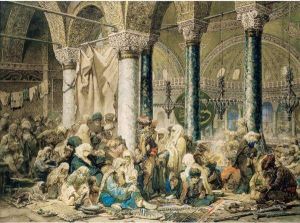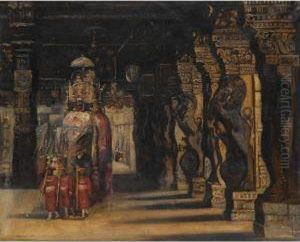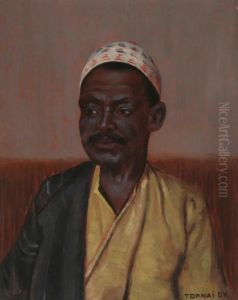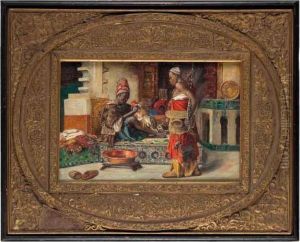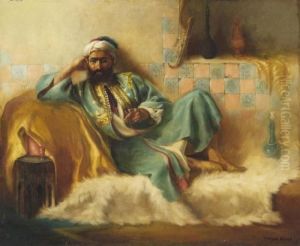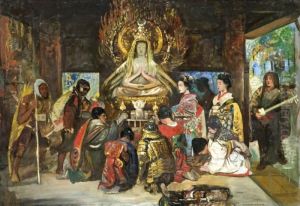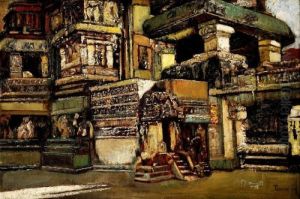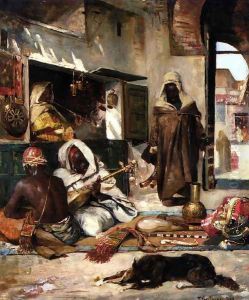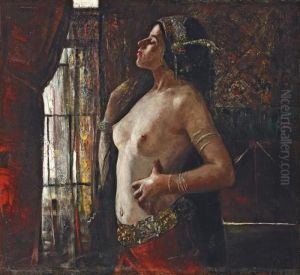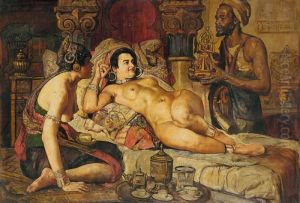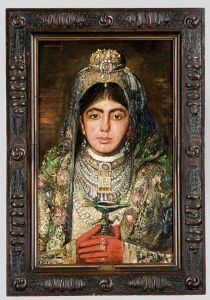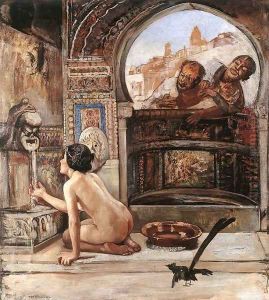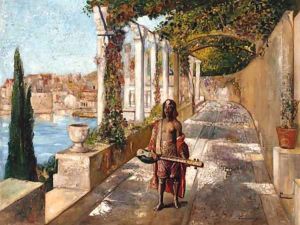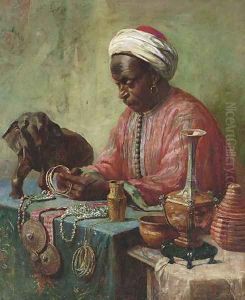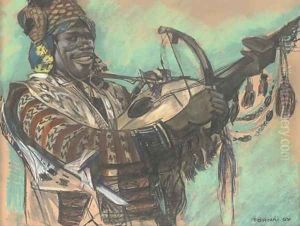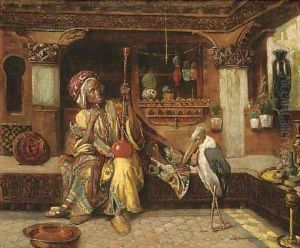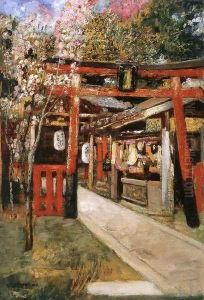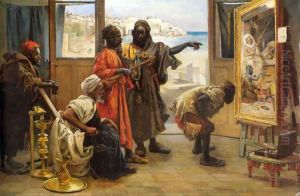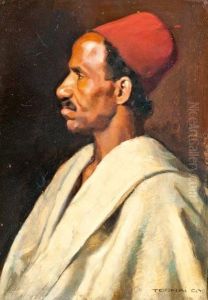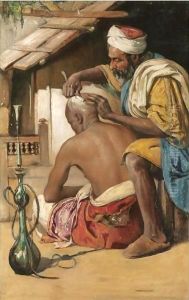Gyula Tornai Paintings
Gyula Tornai was a Hungarian painter and graphic artist, known primarily for his Orientalist themes. Born on June 1, 1861, in Pest, which is now part of Budapest, Hungary, Tornai demonstrated an early talent for art and pursued his studies at the Hungarian University of Fine Arts. He furthered his education abroad, studying in Munich under the guidance of renowned painters such as Gabriel von Hackl and Ludwig von Löfftz.
Tornai's art was heavily influenced by his travels to the Far East, particularly to Japan, China, and India, as well as to North Africa and the Middle East. During these travels, he gathered inspiration and elements that would become central to his work. His paintings often depict scenes of exotic landscapes, historical settings, and everyday life in these distant regions, capturing the essence of the places he visited with a sense of romanticism and fascination.
In 1896, he participated in the National Millennium Exhibition in Budapest, which was a significant event in Hungary, celebrating a thousand years of the Hungarian state. Tornai's works were well received, and his reputation as an Orientalist painter was solidified. He became a member of several art societies and frequently exhibited his works in Hungary and abroad, including at the Venice Biennale.
Gyula Tornai's style is characterized by vibrant colors, attention to detail, and a blend of realism and idealism. He had a unique ability to convey the atmosphere of the locations he portrayed, often imbuing them with a mystical or dreamlike quality. His work reflects the broader 19th-century European interest in Orientalism, which was a trend among many artists of the time who were fascinated by the culture, architecture, and landscapes of the East.
Throughout his career, Tornai also worked as an illustrator and contributed to various periodicals, which helped to popularize his work with a broader audience. He passed away on December 25, 1928, in Budapest. Today, Gyula Tornai's paintings can be found in the collections of several Hungarian museums, including the Hungarian National Gallery, and they continue to be appreciated for their rich portrayal of Orientalist subjects.







